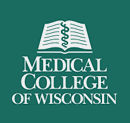预约演示
更新于:2025-05-07
Tubulin x CD79B
更新于:2025-05-07
关联
5
项与 Tubulin x CD79B 相关的药物作用机制 CD79B抑制剂 [+1] |
原研机构 |
非在研适应症- |
最高研发阶段批准上市 |
首次获批国家/地区 美国 |
首次获批日期2019-06-10 |
作用机制 CD79B抑制剂 [+1] |
在研机构 |
原研机构 |
在研适应症 |
非在研适应症- |
最高研发阶段临床1期 |
首次获批国家/地区- |
首次获批日期1800-01-20 |
作用机制 CD79B抑制剂 [+1] |
在研适应症 |
非在研适应症- |
最高研发阶段临床前 |
首次获批国家/地区- |
首次获批日期1800-01-20 |
83
项与 Tubulin x CD79B 相关的临床试验NCT06594939
Multicenter Phase II Study of Mosunetuzumab and Polatuzumab Vedotin With Split-Dose CHP Chemotherapy for Elderly Patients With Diffuse Large B-Cell Lymphoma
This single-arm, interventional phase 2 study is designed to evaluate whether the inclusion of mosunetuzumab subcutaneous and polatuzumab vedotin (Mosun-Pola) to a split-dose CHP chemotherapy backbone will improve outcomes for elderly patients with a new diagnosis of diffuse large B-cell lymphoma.
开始日期2025-06-01 |
申办/合作机构 |
100 项与 Tubulin x CD79B 相关的临床结果
登录后查看更多信息
100 项与 Tubulin x CD79B 相关的转化医学
登录后查看更多信息
0 项与 Tubulin x CD79B 相关的专利(医药)
登录后查看更多信息
2
项与 Tubulin x CD79B 相关的文献(医药)2019-08-01·Cancer Discovery1区 · 医学
Polatuzumab Vedotin Approved for DLBCL
1区 · 医学
Drugs of Today4区 · 医学
Polatuzumab vedotin to treat relapsed or refractory diffuse large
B-cell lymphoma, in combination with bendamustine plus rituximab
4区 · 医学
Article
作者: Amaya, M L ; Jimeno, A ; Kamdar, M
34
项与 Tubulin x CD79B 相关的新闻(医药)2025-02-27
往期回顾(点击标题查看文章)
2023年抗体药物行业发展大盘点
单抗发展史,看这篇就够了!
浅谈抗体的作用机制和优缺点
单抗怎么起名,看这篇!
“魔法子弹”ADC之结构与作用
7大亮点回顾2024全球ADC产业图景
在ADC药物研发中,靶点的选择是决定药物疗效和安全性的关键因素。理想的靶点通常在肿瘤细胞中特异性高表达,而在正常细胞中的表达水平较低,以减少对正常组织的损害。此外,靶点的选择还应考虑其在肿瘤发展中的作用,以及是否具有内吞性,这决定了ADC药物能否被肿瘤细胞有效内化并释放细胞毒性载荷。
目前,当前ADC药物研发的“明星靶点”包括HER2、TROP2、组织因子(TF)、Nectin-4、FRα、EGFR、BCMA、CD家族(CD33、CD30、CD22、CD79B、CD19)等。
表 全球ADC药物上市汇总
实体瘤ADC热门靶点介绍
用于治疗实体瘤的ADC热门靶点包括HER2、TROP2、组织因子(TF)、Nectin-4、FRα和EGFR。从ADC产品的靶点分布来看,HER2是ADC研发最热门的靶点,其次是TROP2。
01
HER2
HER2是一种185kda的跨膜糖蛋白,属于表皮生长因子受体家族的一员。人表皮生长因子受体家族(human epidermal growth factor receptor,HER)承担着信号传导,调节正常细胞的生长、存活、转化及凋亡的作用,HER家族包括4个成员,分别是HER1(EGFR/ErbB1 )、HER2(ErbB2)、HER3(ErbB3)、HER4(ErbB4)。HER2/NEU基因的扩增是人类恶性肿瘤和转移的重要因素。
目前,市场上有三种靶向HER2的ADC药物,分别是T-DM1, DS-8201和RC48。
靶向HER2的ADC药物
1、T-DM1
T-DM1(kadcyla,Ado-trastuzumab emtansine,赫赛莱)是第一个获得FDA批准用于乳腺癌的ADCs药物,携带的单抗靶头是靶向HER2的单抗——曲妥珠单抗(赫赛汀),HER2广泛用于胃癌、乳腺癌细胞;化疗药物是微管蛋白抑制剂小分子抑制剂细胞毒素DM1(Mertansine,美坦新,美登素类),以不可水解的硫醚键为连接子进行连接。TDM1结合到HER2受体的第IV亚区,由受体介导的内化,随后在溶酶体降解,在细胞内释放含有DM1。DM1与微管蛋白的结合破坏细胞内的微管网络,导致细胞周期阻滞和细胞凋亡。
2、DS-8201
DS-8201(Enhertu,fam-trastuzumab deruxtecan-nxki,优赫得),由第一三共和阿斯利康推出。DS-8201携带靶头仍然是曲妥珠单抗(赫赛汀),而细胞毒性药物则是喜树碱类药物,即拓扑异构酶1抑制剂Exatecan(依喜替康)衍生物,并以可水解的四肽连接子,采用半胱氨酸残基的定点偶联,载药量大。目前DS-8201已被NCCN指南列入HER2阳性晚期乳腺癌推荐治疗方案,并在全球不同地区获批上市7种适应症。
3、RC48
在国内,NMPA于2021年6月9日,附条件批准荣昌生物注射用RC48(Disitamab- MMAE,爱地希)上市。RC48没有采用曲妥珠单抗,而是采用自研的人源化维迪西妥单抗(disitamab vedotin)靶向HER2的胞外区,以可裂解的val-cit为连接子,连接了抑制微管蛋白剂单甲基澳瑞他汀E(Monomethyl Auristatin E, MMAE,海兔毒素衍生物),用于局部晚期或转移性胃癌/胃食管交界(GEJ)腺癌患者的三线治疗。
02
TROP-2
TROP-2(滋养层细胞表面抗原2)是一种在多种肿瘤组织中高表达的跨膜糖蛋白,其在肿瘤的发生、发展及转移中发挥重要作用,从而被认为是癌症靶向治疗的一个新型且有前途的分子靶点。
目前,已有多种TROP-2 ADC药物在临床研究中显示出显著的抗肿瘤效果。例如,戈沙妥珠单抗(Sacituzumab Govitecan,SG)由人源化的抗 Trop-2 抗体(hRS7)与拓扑异构酶抑制剂(SN-38)结合而成,已获得美国FDA批准用于治疗三阴性乳腺癌(TNBC)的TROP-2 ADC药物。
03
HER3
相比于拥挤的HER2赛道,HER3由于受体本身结合力较低,不具备内在激酶活性,且没有合适的反映HER3激活与否的生物标志物,在研发中没有受到重视,但现在也有许多企业在跃跃欲试。
如第一三共开发的靶向HER3的ADC药物U3-1402,HER3-DXd(Patritumab Deruxtecan,U3-1402)是一种新型的HER3靶向ADC,其是将靶向HER3单克隆抗体patritumab与拓扑异构酶I抑制剂DXd结合构建。目前U3-1402已被美国FDA授予突破性疗法资格,用于接受过第三代EGFR靶向药和铂类化疗后疾病进展的转移性或局部晚期EGFR阳性非小细胞肺癌患者。
04
EGFR
在EGFR(HER1)的赛道上,Amgen公司的AMG595是人源化的抗EGFR-Ⅷ IgG1单克隆抗体与DM1偶联而成的ADCs,主要用于治疗恶性胶质瘤。但临床研究显示AMG595对一些EGFRvIII突变GBM患者有益,但作用有限。此外,艾伯维的ABT-414也在GBM三期临床中未达到主要终点。
国内EGFR的ADC药物如乐普生物的MRG003靶向EGFR,以MMAE为载荷,以可裂解连接子连接,用于治疗晚期实体肿如头颈癌、鼻咽癌和非小细胞肺癌的研究正在进行中。此外还有恒瑞医药(SHR-A1307)、荣昌生物(RC68)、百力司康(BB-1705 )等多家生物技术公司布局靶向EGFR的ADCs。
05
TF(组织因子)
TF(组织因子),也称为凝血活酶因子III 或CD142,是一种具有促凝血活性的跨膜糖蛋白,该抗原的内化特性非常适合开发TF靶向 ADC。首款用于宫颈癌治疗的ADC,由Seagen和Genmab公司合作开发的Tivdak® (tisotumab vedotin),于2021年取得加速批准在美国上市。它是首个批准用于宫颈癌的ADC,也是目前唯一一款靶向组织因子(TF)的上市ADC。
06
Nectin-4
Nectin-4是一种66kDa的 I 型跨膜蛋白,其主要作用是促进细胞间接触。它在多种肿瘤类型中过表达,而在正常成人组织中几乎不存在,因此也被视为ADC药物的理想靶点。目前,上市的Nectin-4 ADC药物是Padcev(Enfortumab Vedotin),由Seagen和安斯泰来联合开发。
07
FRα
FRα(叶酸受体α)是一种膜结合的代谢叶酸受体,参与叶酸的细胞内转运。一旦与叶酸结合,受体-配体复合物就会通过非经典的内吞机制内化。FRα在卵巢癌、乳腺癌、子宫内膜癌、间皮瘤和肺癌中高表达,但在正常细胞中几乎不表达,这使得该受体非常适合 ADC 靶向。
目前,全球首款且唯一获批的FRα的ADC药物是ImmunoGen公司开发的Elahere(Mirvetuximab Soravtansine),它由抗FRα的人源化单克隆抗体与细胞毒性药物分子DM4通过二硫键偶联,属于靶向FRα的First-in-class ADC。Elahere的作用机制是与肿瘤细胞表面的FRα结合,并通过内吞效应进入到肿瘤细胞中,然后连接键断裂,释放抗微管药物DM4,继而杀伤肿瘤细胞。
08
Claudin18.2
Claudin 18.2是一种紧密连接蛋白家族成员,在多种肿瘤中高表达,目前Claudin 18.2作为极具前景的肿瘤靶向治疗靶点。例如,恒瑞医药开发的SHR-A1904是一款拥有知识产权的Claudin18.2靶向ADC药物,其有效载荷是拓扑异构酶抑制剂(TOPOi),通过与肿瘤细胞表面的靶抗原结合,使得药物被内吞进入细胞后释放小分子毒素杀伤肿瘤细胞。
2025年1月6日,中山大学肿瘤防治中心徐瑞华教授团队在国际权威肿瘤学期刊《柳叶刀·肿瘤》(The Lancet Oncology)上公布了一项具有里程碑意义的临床研究:靶向Claudin 18.2的抗体偶联药物(CMG901)治疗晚期胃癌/胃食管结合部腺癌患者的I期临床试验结果。
作为全球首个针对Claudin 18.2靶点的抗体偶联药物临床研究报道,国内原研的CMG901在晚期胃癌/胃食管结合部腺癌患者中患者中展现的良好安全性与显著疗效,标志着中国在抗肿瘤新药研发领域取得了又一重大突破。
09
c-Met
c-MET,亦称为MET或肝细胞生长因子受体(HGFR),是一种属于MET家族的受体酪氨酸激酶,在多种肿瘤中高表达。
在研c-Met ADC药物
艾伯维ABBV-399和ABBV-400
2024年9月,艾伯维宣布ABBV-399在美申报上市,用于治疗既往接受过治疗的c-Met蛋白过表达、表皮生长因子受体(EGFR)野生型晚期/转移性非鳞状非小细胞肺癌(NSCLC)成人患者。
阿斯利康AZD9592
荣昌生物RC108
再生元REGN5093- M114
恒瑞SHR-A1403
血液瘤ADC靶点介绍
对于血液肿瘤,免疫谱系特异性生物标志物如CD19、CD20、CD22、CD33、CD79B和BCMA在恶性血细胞上广泛且均匀地高水平表达,因此已被广泛探索为ADC开发的候选靶点。此外,获批ADC的靶抗原在结合后容易内化,这是有助于ADC疗效的重要特征。
01
CD19
CD19被认为是一种泛B细胞标志物,也是成熟B细胞表面多分子复合物的主要信号转导成分。CD19的表达在大多数B细胞恶性肿瘤中高度保守,此外,CD19具有快速内化动力学,不会脱落到循环中,使其成为理想的ADC靶抗原。
02
CD22
CD22是一种140kDa的跨膜糖蛋白,与CD33一样,是Siglec家族的成员,与该家族具有多种结构特征。主要区别在于CD22比CD33大得多,因为它具有多个Ig结构域和ITIM/ITIM样基序。CD22的表达仅限于B细胞,并且CD22在包括ALL在内的各种B细胞恶性肿瘤的大多数母细胞中表达水平升高。
CD22被CME内吞。天然样配体通过CD22的组成型快速内吞作用在细胞内积累。这些配体被分选以在溶酶体中降解,而CD22则被回收回细胞表面。此外,CD22配体诱导的内吞作用激活细胞内池,补充或增加细胞表面CD22的表达水平。因此,CD22对ADC具有良好的内吞特性。
03
CD33
CD33是一种67kda的跨膜糖蛋白受体,是唾液酸结合免疫球蛋白样凝集素(SIGLEC)家族的成员,该家族通常在正常髓系细胞上表达,并且是Gemtuzumab ozogamicin的靶标,因为它优先在AML细胞上过表达。CD33的免疫受体酪氨酸抑制基序(ITIM)调节CD33内吞作用,可通过网格蛋白介导的内吞作用(CME)激活。在内吞作用方面,AML细胞中CD33的表达水平与其内吞速率之间没有相关性。CD33是一种缓慢内化的抗原,CD33交联不能改善内吞作用。对GO无反应的AML患者可能与CD33受体摄入功能不佳有关。
04
CD79b
CD79b仅在未成熟和成熟B细胞中表达,在恶性肿瘤中≥80%的B细胞中过表达。CD79a和CD79b是两种非共价结合的跨膜蛋白,介导信号传导和内吞作用。对于后者,CD79a-CD79b异二聚体是控制BCR内吞作用的支架。BCR的内吞作用主要由CME完成,并由AP-2介导。有趣的是,CD79a直接与AP-2的μ亚基相互作用,进而激活CD79b并导致整个BCR复合物的内吞作用。
此外,对于ADC,CD79a可以内化为单体,但CD79b不能。如果CD79b的近端膜酪氨酸(Y195)发生突变,则AP-2与CD79a的结合被阻断,内吞作用也被阻断。在18%的活化B细胞样DLBCL标本中,Y195发生突变。总之,有证据表明CD79b的内吞作用取决于整个BCR复合物的内化,而不是作为单体。
05
BCMA
BCMA或CD269,也称为TNFR超家族成员17,转导诱导B细胞存活和增殖的信号。BCMA的分子量仅为20.2kDa,其配体结合的细胞外区域具有“扶手椅”构象,由六个CRDS组成。除多发性骨髓瘤外,BCMA还在许多血液系统恶性肿瘤中表达,例如霍奇金淋巴瘤和非霍奇金淋巴瘤。
靶点研发的挑战与机遇
尽管上述靶点已成为ADC药物研发的热点,但仍面临诸多挑战,如靶点的同质化竞争、耐药性问题、以及对正常组织的潜在毒性。同时,这些挑战也带来了新的机遇,如开发新的靶点、探索联合用药策略、以及利用新技术提高ADC药物的特异性和疗效。
同质化竞争:随着多个药企聚焦于相同靶点,市场竞争日益激烈,这要求研发者探索新的靶点或开发差异化的产品。
耐药性问题:肿瘤可能对ADC药物产生耐药性,因此需要研究新的有效载荷和连接子技术,以克服耐药性。
对正常组织的潜在毒性:尽管ADC药物旨在减少对正常组织的损害,但某些靶点在正常组织中的表达可能导致不良反应,需要进一步优化药物设计以降低毒性。
小结
ADC药物研发的热门靶点不仅为癌症治疗开辟了新的方向,也推动了药物研发技术的革新与进步。尽管耐药性和市场竞争是挑战,但通过联合用药、适应症拓展等策略,ADC药物的潜力正在被不断挖掘!
参考来源:1、收藏!实体瘤和血液肿瘤的热门ADC靶点总结https://mp.weixin.qq.com/s/TyWFhawME7rngqavLwhC4w2、ADC药物研发的热点靶点与未来趋势https://mp.weixin.qq.com/s/s4ychEG-SoJy3s2Ce5Vqcw3、靶向HER家族的ADCs药物概览https://mp.weixin.qq.com/s/FgWfzopNgYX3FTYqfNHM4Q
END
整理及编辑:芝麻核桃
声明:本文仅代表作者个人观点,不代表任何组织及本公众号立场,如有不当之处,敬请指正。如需转载,请注明作者及来源:蒲公英Biopharma。
皮尔法伯集团创立于1962年,总部位于法国西南部,拥有世界第二大护肤品及化妆品实验室,也是全法第二大私营制药集团。集团业务涵盖处方药、医学护肤品及公共健康三个领域。
皮尔法伯制药作为集团重点业务板块之一,聚焦肿瘤,罕见病和皮肤科三大领域的研发和对外合作。集团在肿瘤学领域拥有40年的创新、开发、制造和商业化经验。集团每年约80%的研发支出用于肿瘤学,目前的肿瘤学商业产品组合涵盖结直肠癌、乳腺癌、肺癌、黑色素瘤、血液学疾病和癌前皮肤病。
抗体药物偶联物临床1期申请上市临床2期CSCO会议
2025-02-14
作者|小麦
2023年市场规模首次突破百亿美元的ADC药物,在2024年持续火热。据不完全统计,全球ADC药物市场规模已超过130亿美元。
多款药物销售额持续增长,如Enhertu、Padcev、Polivy和Trodelvy等,分别增长约43%、54.2%、34%以及23.8%(图1)。
Enhertu以37.54亿美元销售额遥遥领先,问鼎ADC药物榜首。此外,新获批的ADC药物如芦康沙妥珠单抗和Datroway等也展现出良好的市场前景。
图1. 全球获批的ADC药物
截止目前,全球已有17款ADC药物获批上市(虽然Blenrep上市短短两年就撤市,不过经过重新研究之后已经再度提交上市申请,有望在2025年卷土重来)。
2019年至2021年是ADC药物密集收获期,有9款药物获批上市。到了2022年仅有一款药物获批上市。再就是两年后才有一款ADC药物获批上市,即科伦博泰的佳泰莱(芦康沙妥珠单抗),随后FDA批准了第三款Trop2 ADC药物Datroway(图1)。
代表性药物
HER2 ADC:Enhertu和Kadcyla
Enhertu(德曲妥珠单抗)是由阿斯利康和第一三共联合开发的一款靶向HER2的ADC药物,通过可切割的四肽连接链将细胞毒性拓扑异构酶I抑制剂Dxd与HER2单抗Trastuzumab(曲妥珠单抗)偶联而得,相继于2019年12月和2023年2月在美国和中国获批上市。
2024年1月31日,第一三共发布2024前三个季度财报(4-12月),其中Enhertu总收入4044亿日元(约26.82亿美元),结合2024年Q1(即2023财年Q4)的销售额1199亿日元,按自然年计算,Enhertu在2024年的全球销售额为5243亿日元(约合37.54亿美元,按1日元=0.0072美元换算),同比增长约32.4%,这一增长主要得益于其在HER2阳性乳腺癌二线治疗和HER2低表达乳腺癌适应症上的强劲表现(图2)[1]。
图2. Enhertu的市场表现
2024年8月,Enhertu获得美国FDA的突破性疗法认定,用于治疗不可切除或转移性激素受体阳性HER2低表达或HER2超低表达的乳腺癌患者。
今年1月27日, FDA批准了Enhertu用于治疗不可切除或转移性激素受体(HR)阳性、HER2低表达(IHC 1+或IHC 2+/ISH-)或HER2超低表达(IHC 0)的乳腺癌患者(图3)。
图3. Enhertu获FDA批准用于治疗HER2超低乳腺癌患者
此次批准主要基于III期DESTINY-Breast06临床试验的积极结果:Enhertu组患者的中位PFS为13.2个月,而化疗组为8.1个月,疾病进展或死亡风险降低了36%。Enhertu组的确认ORR为62.6%,显著高于化疗组的34.4%。Enhertu组的OS达到12个月的患者比例更高(87.0% vs. 81.1%,HR=0.81)。
Enhertu正在全球范围内进行多项临床试验,以进一步探索其在HER2阳性胃癌及其他癌症中的应用,包括一线治疗HER2+胃癌(DESTINY-Gastric05)。此外,Enhertu的临床研发计划还包括联合免疫治疗等其他抗肿瘤治疗的试验(图46)。
图4. Enhertu一线治疗HER2+胃癌方案
在中国市场,Enhertu的2024年销售额为93亿日元(约合0.67亿美元),同比增长159.5% [1]。
2024年8月和10月,Enhertu相继获得中国国家药品监督管理局附条件批准用于治疗既往接受过两种或两种以上治疗方案的局部晚期或转移性HER2阳性成人胃或胃食管结合部腺癌患者以及用于治疗存在HER2激活突变且既往接受过至少一种系统治疗的不可切除的局部晚期或转移性非小细胞肺癌(NSCLC)成人患者。
Kadcyla(恩美曲妥珠单抗)是由罗氏和ImmunoGen共同研发的首款获批靶向HER2的ADC产品,通过不可裂解连接链将微管抑制剂DM1与HER2单抗trastuzumab偶联而得。
2013年2月,Kadcyla获美国FDA批准上市,成为全球第三款上市的ADC。这是全球首款HER2 ADC,同时也是首个用于实体瘤的ADC药物。
作为HER2阳性乳腺癌二线治疗的新选择,Kadcyla在2018年的全球销售额就已超过10亿美元,成功挤进重磅炸弹行列。2023年收入高达19.66亿瑞士法郎(约合22.8亿美元,按1瑞士法郎=1.16美元换算)。根据近期罗氏2024年财报,Kadcyla在2024年的全球销售额为19.98亿瑞士法郎(约合23.17亿美元)(图5)。
图5. 罗氏Top 20销售额药物
CD30 ADC:Adcetris
Adcetris是由Seagen(后被辉瑞收购)原研的一款靶向CD30的ADC产品,2009年武田制药与Seagen达成协议获得Adcetris除美国和加拿大以外国家的商业化权力。
Adcetris是Seagen通过二肽连接子将细胞毒性药物微管蛋白抑制剂MMAE和CD30单抗brentuximab偶联而得,相继于2011年8月和2020年5月被FDA和NMPA批准上市,用于治疗霍奇金淋巴瘤(HL)和系统性间变性大细胞淋巴瘤(sALCL)。
Adcetris在2021年被欧盟批准作为CD30表达的sALCL一线治疗药物,成为全球第一个用于一线治疗的ADC。
Adcetris作为一款用于治疗复发或难治性霍奇金淋巴瘤(HL)和系统性间变性大细胞淋巴瘤(ALCL)的ADC药物,继续在全球市场中占据重要地位,根据近期辉瑞的财报,2024年Adcetris销售额达到10.89亿美元,加上武田制药2024年自然年Adcetris的约8.22亿美元,Adcetris全球销售额总共为19.11亿美元(图6)。
图6. Adcetris的销售额
Trop-2 ADC:佳泰莱、Datroway和Trodelvy
佳泰莱、Datroway和Trodelvy都是靶向Trop-2的ADC药物,佳泰莱获批是基于三期临床OptiTROP-Breast01的数据,与化疗对照组中位无进展生存期(mPFS)为2.3个月相比,佳泰莱治疗组mPFS为5.7个月;mOS分别为尚未达到(11.2-NE)、9.4个月(8.5-11.7),死亡风险下降47%;ORR分别为43.8%、12.8%,与化疗相比,PFS和OS均显示出具有统计学意义的改善。
2024年12月27日,Datroway(Datopotamab deruxtecan)首次在日本获批上市,用于治疗既往接受过化疗的成年人HR阳性、HER2阴性(IHC 0、IHC 1+或IHC 2+/ISH-)不可切除或复发乳腺癌患者(图7)[1,2]。
图7. Datroway在日本和美国获批
随后2025年1月17日,FDA基于TROPION-Breast01 III期试验结果批准了Datroway用于治疗既往接受过内分泌治疗和化疗的不可切除或转移性激素受体(HR)阳性、HER2阴性乳腺癌患者。
TROPION-Breast01实验结果显示,Datroway显著降低了疾病进展或死亡风险达37%(HR=0.63;95% CI:0.52-0.76;p<0.0001),mPFS为6.9个月,化疗组为4.9个月。
2025年2月1日,欧洲药品管理局(EMA)人用药品委员会(CHMP)推荐Datroway用于治疗不可切除或转移性激素受体(HR)阳性、HER2阴性乳腺癌的成年患者。这些患者需已接受过内分泌治疗,并曾接受过至少一线化疗。该推荐将会被提交至欧盟委员会(EC),其将决定药品最终是否上市。
Trodelvy最初由Immunomedics公司开发靶向Trop-2的ADC,通过可水解的连接子将Trop-2单抗sacituzumab与DNA拓扑异构酶Ⅰ抑制剂伊立替康的活性代谢产物SN-38偶联而得。2020年9月,吉利德以210亿美元收购Immunomedics,从而将Trodelvy收入囊中。
目前,Trodelvy已获FDA批准用于治疗接受过至少2种系统治疗(其中至少1种针对转移性疾病)的转移性三阴性乳腺癌(mTNBC)患者、用于接受过含铂化疗和免疫治疗的转移性尿路上皮癌(mUC)患者以及用于接受过内分泌治疗和≥2线系统治疗的HR+/HER2-转移性乳腺癌患者。
此外,Trodelvy在2024年12月获得FDA突破性疗法认定,用于治疗在铂基化疗期间或之后病情进展的广泛期小细胞肺癌(ES-SCLC)成人患者[3]。
此次突破性疗法认定基于全球 2 期 TROPiCS-03 研究 ES-SCLC 队列的结果,该队列显示 Trodelvy 作为 ES-SCLC 的二线治疗取得了令人鼓舞的结果。
正如在 IASLC 2024 年世界肺癌会议上所展示的那样,Trodelvy 在铂耐药 (PR)和铂敏感(PS)疾病中都显示出有前景的抗肿瘤活性,并且安全性与之前的 Trodelvy 研究一致。这些数据支持对ES-SCLC中Trodelvy的进一步研究,吉利德计划在该患者群体中启动3期临床试验。
2024年5月,吉利德公布了Trodelvy治疗局部晚期或转移性尿路上皮癌 (mUC)的3期验证性TROPiCS-04研究的顶线结果。TROPiCS-04 是一项随机开放标签III期研究,旨在评估了Trodelvy与单药化疗(医生选择的治疗,TPC)在先前接受过含铂化疗和抗 PD-(L)1 治疗的 mUC 患者中疗效和安全性(图8)。
图8. TROPiCS-04实验方案
但是该研究未达到意向治疗(ITT)人群总生存期(OS)的主要终点,因此,吉利德在2024年10月18日宣布自愿撤回Trodelvy用于治疗mUC的加速批准[4]
随着Trodelvy在三阴性乳腺癌(TNBC)和HR+/HER2-乳腺癌等适应症上的市场表现良好,Trodelvy全球营收在2023年已突破10亿美元。在2024年继续显示出强劲的市场增长势头,销售额达到13.16亿美元(图9)。
图9. Trodelvy全球销售额
Nectin-4 ADC:Padcev
Padcev是由安斯泰来和Seagen(后被辉瑞收购)共同开发的一种靶向Nectin-4的ADC药物,通过靶向Nectin-4蛋白,将化疗药物单甲基澳瑞他汀E(MMAE)递送至癌细胞内部,从而实现对癌细胞的选择性杀伤。
2019年12月,Padcev首次获得美国FDA加速批准,随后2021年7月被FDA完全批准,用于治疗既往接受过PD-1/PD-L1抑制剂和含铂化疗的局部晚期或转移性尿路上皮癌(mUC)患者,2023年12月,FDA批准Padcev联合帕博利珠单抗(Keytruda)用于一线治疗局部晚期或转移性尿路上皮癌(la/mUC)成年患者。
2024年,Padcev获得多项进展。8月19日,中国国家药品监督管理局(NMPA)批准Padcev用于治疗既往接受过PD-1/PD-L1抑制剂和含铂化疗的局部晚期转移性尿路上皮癌(mUC)患者。
随后8月22日、8月28日和9月24日,Padcev相继被加拿大、欧盟和日被批准与帕博利珠单抗(Keytruda)联合用于一线治疗不可切除或转移性尿路上皮癌。
2025年1月,NMPA进一步批准Padcev与帕博利珠单抗联合用于局部晚期或转移性尿路上皮癌的成年患者。
2024年3月,旨在评估Padcev与帕博利珠单抗联合治疗未经治疗的局部晚期或转移性尿路上皮癌(la/mUC)患者的疗效和安全性的3期EV-302临床试验被发表在NEJM上。
研究结果显示,联合治疗的中位总生存期(OS)为31.5个月,而含铂化疗为16.1个月,死亡风险降低了53%(HR=0.47,P<0.00001)。联合治疗的中位无进展生存期(PFS)为12.5个月,而化疗为6.3个月,癌症进展或死亡风险降低了55%(HR=0.45,P<0.00001)(图10)[5]。
图10. EV-302临床试验结果
Padcev自2021年被FDA完全批准之后快速打开了市场,2022年全球销售额已达7.57亿美元,2023年销售额达到7.3亿美元,2024年销售额达到15.88亿美元(图11)。
图11. 2024年Padcev的销售额
CD79b ADC:Polivy
Polivy(泊洛妥珠单抗)是由罗氏研发的全球首款获批靶向CD79b的ADC药物,通过可裂解型连接子将细胞毒素单甲基奥瑞他汀E(MMAE)和CD79单抗Polatuzumab偶联而得,相继于2019年6月和2023年1月在美国和中国获批上市,用于治疗弥漫性大 B 细胞淋巴瘤(DLBCL)。
根据近期罗氏发布的2024年年报,Polivy在2024年的全球销售额达到了11.21亿瑞士法郎(约13.0亿美元),同比增长约34%。
2023年4月,Polivy获得FDA批准,联合R-CHP(利妥昔单抗+环磷酰胺+多柔比星+泼尼松)方案一线治疗弥漫性大B细胞淋巴瘤(DLBCL)。这一批准基于POLARIX III期临床试验的关键数据,该研究是一项全球性、多中心、随机、双盲、安慰剂对照的临床试验,共纳入879例患者。
2024年12月美国血液学会(ASH)年会上,罗氏公布了POLARIX III期研究的五年随访数据。
结果显示,Polivy联合R-CHP方案在总生存期(OS)方面显示出积极趋势,疾病进展、复发或死亡风险降低了27%。此外,接受Polivy联合R-CHP治疗的患者后续治疗需求减少了近25%,这可能减轻患者和医疗系统的负担。
在美国地区,Polivy已占据一线DLBCL市场约29%的份额,罗氏正在探索Polivy与其他血液瘤产品的联合用药方案,包括Polivy + CD20xCD3双特异性抗体Lunsumio二线治疗DLBCL(SUNMO试验),以及Polivy联合R-CHP和Columvi对比Polivy联合R-CHP在一线DLBCL治疗中的疗效(SKYGLO试验)等(图12)。
图12. Polivy已占据一线DLBCL市场约29%的份额
小结
ADC是近几年全球新药研发领域最红火的领域之一,去年全球有两款ADC药物获批上市,ADC药物全球规模增长约24%至130亿美元。
Enhertu以37.54亿美元的销售额成为最畅销ADC药物,其他表现突出的ADC包括Adcetris(血液瘤)、Polivy(DLBCL)和Padcev(尿路上皮癌),分别实现19.11亿、13.0亿、15.88亿美元的销售额。
国产ADC在2024年也取得显著进展,多款药物获批或进入临床阶段,科伦博泰的佳泰莱(芦康沙妥珠单抗)成为国内首个获批的国产Trop2 ADC药物。
参考文献
1.FY2024 Q3 Financial Results Presentation
2.DATROWAY® Approved in Japan as the First TROP-2 Directed Therapy for Patients with Previously Treated Unresectable or Recurrent HR Positive, HER2 Negative Breast Cancer
3.U.S. FDA Grants Breakthrough Therapy Designation to Trodelvy® (sacituzumab govitecan-hziy) for Second-Line Treatment of Extensive-Stage Small Cell Lung Cancer
4.Gilead Provides Update on Phase 3 TROPiCS-04 Study
5.T. Powles, B.P. Valderrama et.al, Enfortumab Vedotin and Pembrolizumab in Untreated Advanced Urothelial Cancer, N Engl J Med 2024;390:875-88
共建Biomedical创新生态圈!
如何加入BiG会员?
抗体药物偶联物财报上市批准突破性疗法临床结果
2024-12-21
·抗体圈
摘要
抗体偶联药物(antibody drug conjugates, ADC)作为抗肿瘤治疗的前沿技术, 近年来取得了显著进展。ADC通过连接子将高活性小分子毒素与高特异性抗体进行偶联, 不仅能够实现对肿瘤细胞的精准打击, 同时降低了药物的全身毒性, 进而扩大了治疗的有效性和安全性窗口。然而, 由于ADC分子设计的复杂性, 其疗效和安全性受多种因素影响。模型引导的药物开发(model informed drug development, MIDD)是一种通过数学和统计模型进行建模和模拟, 对药物研发进行定量分析和决策指导的方法。这种方法为新药研发提供强大的工具支持。通过MIDD整合ADC相关的多方面数据和信息, 有助于理解ADC的复杂机制、药代动力学和药效学等作用特征, 为优化ADC研发流程和临床转化决策提供独特见解。本文将介绍MIDD和ADC的基本概念, 并浅析MIDD在ADC研发不同阶段的应用案例, 旨在为ADC的发展提供有益参考。
_
正文
_
抗体偶联药物(antibody drug conjugates, ADC)是一种新型抗肿瘤药物, 与传统化疗药物相比, 其结合了单克隆抗体的高靶向性和细胞毒素的高活性, 在实现精准高效杀伤肿瘤细胞的同时降低对正常组织的毒副作用。ADC药物在某些难治性肿瘤中的治疗效果显著优于传统单克隆抗体, 被誉为肿瘤治疗领域的“魔法子弹”。目前, 全球已有15款ADC成功获批上市(表1), 上百种ADC正在积极进行临床评估, 充分展现出ADC在肿瘤治疗领域的巨大潜力。
Table 1 List
of approved of antibody drug conjugates (ADC). HER2: Human epidermal growth
factor receptor 2; Trop-2: Tumor associated antigen 2; BCMA: B-cell maturation
antigen; EGFR: Epidermal growth factor receptor; MMAE: Monomethyl muristatin E;
PE38: Pseudomonas exotoxin; Dxd: Deruxtecan; PBD: Pyrrolobenzodiazepine; DM:
Dexamethasone methylation
ADC研发管线正在不断被扩大, 大量资源和时间被投入到分子筛选及优化、评估疗效与安全性、实现临床转化以及临床方案设计等关键环节中。鉴于ADC药物独特的结构和复杂的作用机制, 仅依赖传统实验方法可能难以甚至无法全面理解各个组成部分对药物疗效及安全性的影响。模型引导的药物研发(model informed drug development, MIDD)通过建模与模拟(modeling and simulation, M&S)技术整合生理学、药理学和疾病过程等信息通过数学框架进行定量研究, 进而指导新药研发和决策。随着MIDD在新药研发领域的不断发展, 研究人员意识到将其应用于ADC研发将有助于实现这一目标。MIDD为整合ADC不同研究阶段、不同维度的数据信息提供了一个定量框架, 进而为药物研发过程中“继续/停止”决策提供了重要的参考依据。这不仅有助于改善现有数据不足的困境, 还能有效提高研发效率, 降低药物研发失败的风险。本文将简要介绍MIDD和ADC的基本概念, 并分析MIDD在ADC研发不同阶段的应用案例, 旨在为ADC的发展提供有益的参考与启示。
1
MIDD在ADC的应用背景
1.1 MIDD的概念及发展历程
MIDD是通过M&S技术整合生理学、药理学及疾病过程等信息, 进而指导新药研发和决策的定量研究方法。近年来, 随着对MIDD的认知和价值的不断深化, MIDD已广泛应用于药物研发的各个阶段, 涵盖药物发现、临床前研究、临床开发、监管评估以及药物全生命周期管理, 对药物研发决策的证据支持和指导具有重要意义。模型分析与实测研究过程通常呈现出“学习与确认”循环形式, 即通过已有数据信息建立模型, 预测相关研究结果, 进一步通过后续实测数据验证模型分析结果的可靠性及判断后续研究方向, 并随着研发过程的推进对模型进行不断更新和完善(图1)。
Figure 1 A quantitative framework flow of “Learn and Confirm Cycle”.
( Image adapted with permission from reference[13]. Copyright © John Wiley and Sons Ltd.
MIDD应用多方面模型工具, 包括群体药代动力学(population pharmacokinetics, Pop-PK)、生理药动学((physiologically based pharmacokinetics, PBPK)、药动学/药效学(pharmacokinetics/pharmacodynamics, PK/PD)、暴露反应关系(exposure-response, E-R)、基于模型的荟萃分析(model-based meta analysis, MBMA)及定量系统药理学(quantitative systems pharmacology, QSP)等已经在药物研发的多个环节取得了显著的成功应用, 例如适应症与剂量选择、非临床与临床转化研究以及临床药理学研究等方面。
目前, 这些工具在美国FDA批准的药物中的使用比例高达90%以上, 已经成为药物研发领域不可或缺的关键工具。全球众多监管机构包括美国食品药品监督管理局(Food and Drug Administration, FDA)、国家药品监督管理局药品审评中心(Center for Drug Evaluation, CDE)、欧洲药品管理局(European Medicines Agency, EMA)等均发布了多项涉及MIDD的指南和药品申报要求, 这些指导原则旨在鼓励并指导制药企业运用MIDD, 以进一步提升药物的商业、科学和临床价值。2018年, FDA在处方药使用者方案第6次修订版(PDUFA VI)正式认定MIDD为高效和有效药物开发的重要推动因素, 鼓励药物开发人员和美国FDA审查人员能够共同参与讨论药物开发中使用MIDD工具, 有助于药品不同开发环节的研发人员和审评人员就剂量选择、临床试验模拟、机制化安全性评估等方面的决策更早达成共识。CDE于2020年发布的(模型引导的药物研发技术指导原则》将有助于提升国内制药工业界的实践能力, 促进制药行业的技术进步和创新。为了进一步指导我国创新药物临床研究阶段剂量探索和优化, 并提供可参考的技术标准, CDE于2024年7月25日起草了(模型引导的创新药物剂量探索和优化技术指导原则(征求意见稿)》。
1.2 ADC的结构、作用机制及特征
相较于传统药物, ADC具有独特的结构设计和复杂的作用机制。ADC通常由靶向特异性抗原的单克隆抗体、化学连接子及有效载荷(小分子毒素)三部分组成, 每个抗体分子上平均偶联的小分子毒素数量称为抗体药物比(drug antibody ratio, DAR)。ADC的作用机制(图2)是通过抗体部分特异性地识别并结合到目标细胞表面的抗原, 随后通过内吞作用进入细胞内部。在细胞内, ADC经溶酶体作用后连接子断裂, 释放出细胞毒素, 这些毒素能够结合至微管蛋白、DNA或拓扑异构酶, 进而诱导细胞死亡。同时, 部分ADC可以与内吞体的新生儿Fc受体(neonatal Fc receptor, FcRn)结合, 导致ADC循环至细胞外。一些疏水性小分子毒素还可通过细胞扩散, 对邻近肿瘤细胞产生杀伤活性, 称为旁观者效应。
Figure 2 Mechanism action of antibody drug conjugates. FcRn: Neonatal Fc receptor
ADC的分子设计使其同时结合了单克隆抗体药物和小分子毒素药物两者的PK和PD特征。ADC通常经过静脉给药, 从分子量大小和空间体积来看, 小分子毒素药物的相对分子质量为裸抗体的1/150。因此, ADC表现出了诸多与抗体药物类似的PK特征, 如靶点介导的药物清除、FcRns受体循环作用及非特异性蛋白酶降解等。然而, ADC在代谢和清除途径过程中同时具有抗体药物和小分子毒素特征, 即在低剂量时呈非线性, 高剂量时呈线性。ADC进入体内后, 小分子毒素通过酶解或化学反应逐渐从ADC药物上解离下来, 进一步增加了ADC药物在体内的复杂性, 导致在进行PK研究时需要对大量的分析物进行分析检测, 例如总抗体浓度、结合抗体浓度、游离小分子浓度等, 以便更好地了解ADC药物的体内过程。
因此, ADC药物的PK/PD之间的关系不仅需要综合考虑各种组成成分(抗体、连接子和小分子毒素)的特征, 还需要考虑它们之间的相互作用。ADC的PK特征取决于抗体和小分子毒素在体内的动态变化, PD特征通常涉及ADC与作用靶细胞之间的相互作用程度及其产生的效应。PK/PD整合分析有助于理解ADC在体内的行为, 评估药物浓度与疗效和毒性之间的关系, 为临床决策提供科学依据。
2
MIDD在ADC领域的应用
截至目前, 已有不少学术机构及医药公司发表了与ADC药物相关的模型研究案例(表2)。通过整合在研发过程中生成的数据, 研究者们构建了数学模型框架来解决各个研发阶段的目标和问题。随着M&S技术的进步, 这些模型研究不仅仅依赖于传统的经验/机械模型, 同时还结合了ADC的作用机制及其在肿瘤内的分布特征进行建模(图3)。下文通过将MIDD在ADC研发及临床阶段已有的应用参考案例归纳为分子筛选及设计优化、加速临床转化、评价药物−药物相互作用(drug-drug interaction, DDI)及临床剂量探索及优化。
Table 2 List
of prominent models for ADC. PK: Pharmacokinetics; PD: Pharmacodynamics;
Pop-PK: Population pharmacokinetics; E-R: Exposure-response; PBPK:
Physiologically based pharmacokinetic; QSP: Quantitative systems pharmacology;
IVIVC: In vitro-in vivo correlation; DDI: Drug-drug interaction; MMAF:
Monomethyl auristatin F; STEAP1: Six-transmembrane epithelial antigen of the
prostate
Figure 3 Schematic overview of model informed drug development approaches of ADC. MIDD: Model informed drug development
2.1 分子筛选及设计优化
在药物研发的早期阶段, 筛选和优化适合临床研究的ADC分子是关键任务。为了更高效地完成这一任务, 研究人员需设计和开发合适的模型, 并确保将模型输出结果有效地分享给团队成员, 这对于药物研发的决策制定具有重大意义。
Maass等构建了描述ADC细胞水平作用机制PK模型, 该模型纳入了可能影响ADC在细胞内处理和有效载荷释放的相关参数。同时基于流式细胞术和荧光成像法对关键参数建立了定量方法, 如抗体与抗原的结合和解离常数、ADC内吞速率和降解速率等。通过比较不同参数设置下细胞内释放的小分子毒素药物的曲线下面积(AUC)变化进行敏感性分析, 有助于了解细胞内处理步骤与设计参数之间的相互影响。结果表明ADC的内吞速率和小分子毒素药物的外排速率是影响药物在细胞中暴露量关键因素。Wada等通过PK/PD模型比较了两种不同连接子的ADC在肿瘤内小分子毒素浓度及肿瘤药效方面的差异性。模拟结果表明, 连接子的不同会影响小分子毒素的释放特性, 连接子为二硫键的T-SPP DM1比连接子为硫醚键的trastuzumab emtansine(T-DM1)可能具有更快的小分子毒素释放特性, 这可能导致肿瘤内细胞毒性药物的浓度更高。Shah等开发了一种基于19种不同ADC药物的PK/PD模型, 并通过肿瘤静态浓度(tumor static concentration, TSC)建立体外-体内相关性(in vitro-in vivo correlation, IVIVC)。模拟结果表明, 这些ADC药物在体内的TSC与体外的TSC呈线性正相关。因此, 这种合理的IVIVC方法能够利用体外药效数据来预测体内药效情况, 为体内药效实验设计提供参考。Singh等开发了用以表征ADC的旁杀伤效应的体外PD模型, 该模型结合了两种不同的细胞分布模型来反映共培养系统中抗原高表达和低表达的细胞群体。这项研究提供了一个定量旁杀伤效应的框架, 有助于筛选出具有最佳旁杀伤能力的新型ADC。Ait-Oudhia等基于T-DM1和Brentuximab vedotin开发了评估ADC血液毒性的PK/PD模型。模型模拟结果表明, 小分子毒素的释放速率是影响ADC血液学毒性的一个关键因素, 因此调整小分子毒素释放速率是改善血液毒性, 优化ADC治疗窗口的有效途径。
MIDD不仅对影响ADC药物性能的多个因素进行了参数化定量分析, 而且还利用有限的数据为药物分子的筛选和优化提供了独特的见解。即借助模型预测, 研究人员能够在早期阶段掌握不同结构组合(如连接子稳定性、抗体内吞速率、小分子毒素外排效率及血液毒性等)对药物疗效与安全性的影响, 为更有效地筛选和优化ADC药物设计提供不同路径, 进而发掘更安全有效的药物分子。
2.2 加速临床转化
如何正确地转化临床前的研究结果, 预测临床疗效, 以提高临床转化成功率一直是ADC开发过程中面临的挑战。较低的临床成功率的主要原因之一在于难以将临床前的E-R关系正确地转化应用于临床中。此外, ADC药物具有复杂的作用机制及PK行为, 肿瘤组织中的药物浓度与血浆中的药物浓度在大多数情况下呈现不平衡状态, 肿瘤对ADC的摄取量并不等于其发挥疗效的药量。因此, 如果仅依赖传统经验模型来推测ADC药物浓度与疗效之间的关系可能并不可靠, 临床前和临床肿瘤生长抑制(tumor growth inhibition, TGI)的结果存在较大的差异。因此, 开发合理的模型用以描绘ADC肿瘤内暴露量与疗效之间的关系并转化到临床是临床前研究的核心任务。
Shah等首次建立了基于brentuximab vedotin的机制PK/PD模型, 该模型描述了ADC在全身暴露过程并纳入了关键肿瘤生物指标(如肿瘤大小、抗原表达水平及抗原内化等), 同时成功地基于临床前的研究对药物的临床效果进行了预测。基于这一模型基础, Singh等等进一步开发了基于机制PK/PD模型转化ADC临床前至临床的通用策略, 并在T-DM1的研发过程中进行验证。首先, 该策略根据T-DM1临床前荷瘤小鼠研究建立肿瘤处置PK/PD模型; 随后, 将食蟹猴的PK参数通过异速放大至人体, 以预测药物在人体的PK行为; 最后将预测的人体PK数据、小鼠PK/PD模型估算的疗效参数与临床上观察到的乳腺癌体积和生长参数结合, 转化为人体临床PK/PD模型。最后, 该研究利用转化后的PK/PD模型, 进行了临床试验模拟, 即预测了T-DM1的无进展生存率(progression-free survival, PFS)和客观缓解率(objective response rate, ORR)。模型模拟的人类表皮生长因子受体2(human epidermal growth factor receptor2, HER2)1+和3+人群的PFS率结果与三个不同临床试验中观察到的相当。Scheuher等建立了一个多尺度的QSP模型, 更多的机制细节被纳入模型。该模型使用T-DM1和trastuzumab deruxtecan(T-Dxd)进行模型的开发、校准和验证。该模型与上述Singh等的临床转化策略相似, 但融入了更详细的机制性描述, 如FcRn介导的抗体循环。它同样描述了ADC、抗体和小分子毒素在肿瘤内外的处置情况, 包括与肿瘤外部的目标结合。该模型被转化为人类, 并进行了虚拟临床试验模拟, 成功地预测了T-DM1和T-DXd在HER2阳性转移性乳腺癌治疗中的PFS反应, 包括基于HER2抗原表达差异的疗效区别。总的来说, 该模型是向ADC的平台QSP模型和策略迈进的一步, 它整合了多种类型的数据和知识来预测ADC的疗效。
这些研究提供了一个经过验证、可重复的临床转化策略(图4), 它不仅成功整合了临床前和临床数据, 还能通过模拟不同给药方案来预测临床试验的结果。这一策略为其他ADC的临床转化研究提供了重要参考。
Figure 4 ADC clinical translational modeling and simulation strategy. PFS: Progression free survival
2.3 评价DDI
DDI是指在使用两种或两种以上药物时, 由于药物之间的相互作用或与机体的反应, 导致药物的效果、持续时间或性质发生不同程度的改变的现象。在考察ADC的DDI时需要考虑大分子抗体及小分子毒素药物的相互作用。虽然ADC的抗体部分与细胞色素P450同工酶(CYP450)的关联较小, 但其降解产物中的游离小分子毒素, 如monomethyl muristatin E(MMAE)可能会被CYP和转运蛋白代谢和排泄。研究表明, MMAE既是CYP3A和P-糖蛋白的底物, 也是CYP3A的抑制剂。尽管循环中未结合的MMAE水平较低, 但由于其具有高活性和低暴露量的特性, 其DDIs仍可能通过调节重要消除途径发生。因此, 评估与游离小分子毒素药物相关的DDI潜力是支持ADC临床开发的重要风险内容。Chen等首次通过PBPK模型对含有vc-MMAE的ADC进行DDI预测评估。该模型结合“自上而下”和“自下而上”两种建模方法, 利用抗CD22-vc-MMAE的临床前和临床数据进行建模。在确认相关参数后, 预测brentuximab vedotin的PK中MMAE的暴露量, 并将其与brentuximab vedotin的临床试验PK中MMAE暴露量进行比较和验证。最后通过验证模型预测brentuximab vedotin与咪达唑仑(CYP3A底物)、酮康唑(CYP3A抑制剂)和利福平(CYP3A诱导剂)之间的DDI, 其AUC及药物最大浓度结果均与临床DDI研究观测值接近。研究还表明, 对于具有相同连接子(vc)及相同的小分子毒素(MMAE)的ADC, 无论单克隆抗体部分的设计如何, 其PK特征都相似。Samineni等进一步优化了上述PBPK模型, 并成功将其应用于预测polatuzumab vedotin(CD79b-vc-MMAE)DDI的风险结果。此外, 该模型的预测成果已成功获得监管部门的认可, 它不仅能够有效替代传统的临床药物DDI试验, 还为药物说明书的编写提供了科学的指导依据。
2.4 临床剂量探索及优化
ADC设计的初衷是将高活性小分子毒素药物与抗体结合, 以降低药物毒性并扩大治疗窗口。然而, 越来越多的临床数据显示, 与传统药物相比, ADC的治疗窗仍相对较窄。许多ADC药物因毒性过大或风险/获益比过高而在临床开发过程中受阻。关键临床试验的剂量探索及优化是影响ADC研发成功与否的重要因素之一, 若未进行充分的剂量探索, 可能导致上市的剂量并非最佳剂量, 无法为患者提供疗效最大化、安全性风险最小化的治疗, 甚至可能导致治疗失败和药物退市。
Mylotarg(gemtuzumab ozogamicin, GO)是全球首个经FDA批准上市用于治疗CD33阳性急性髓性白血病(acute myeloid leukemia, AML)的ADC药物。然而, 该药物在验证性III期试验中却未能获得明显的临床效益, 且出现了严重的肝损伤和高死亡率, 导致研究提前终止研究并于2010年撤市。尽管GO退出了市场, 但由于AML患者的结局持续不良, 人们仍对其保持浓厚的研究兴趣。随后, 使用不同给药方案(MyloFrance-1、ALFA-0701及AML-19)的临床试验结果发现, 通过增加给药频率以较低剂量给药((分级剂量)可以显著提高GO疗效, 同时降低毒性, 但这些试验缺乏PK数据。Fostvedt等基于GO过去的8项临床研究数据, 通过PK/PD模型进行分析, 以支持这些新的给药方案的安全性和有效性。该研究通过成年患者数据进行Pop-PK建模, 预测关键III临床试验(ALFA-0701)中GO总抗体的暴露量; 随后通过模型描述预测的GO总抗体的暴露量与疗效及安全性之间的关系, 并桥接外推至儿童患者; 另外建立半机制模型预测不同治疗方案对血小板和粒细胞的抑制作用情况。模型模拟结果表明, 与最初治疗方案相比(9mg·m-2, 第1和15天给药), 新的给药方案中GO((3mg·m-2, 第1、4和7天给药)与阿糖胞苷和多柔比星联合化疗方案的临床效果最佳。根据以上结果, FDA于2017年重新批准了GO上市, 用于治疗新诊断和复发的成人AML患者以及2~17岁儿童患者的复发AML。
T-DXd成为首个获得FDA批准用于治疗非小细胞肺癌(non-small cell lung cancer, NSCLC)的ADC药物, 其剂量优化探索策略充分展现了MIDD的应用优势。Yin等的研究首次公布了T-DXd在HER2阳性转移性乳腺癌和其他实体瘤患者中的Pop-PK特征。这项研究涵盖了5个临床试验的患者数据(n=679), 探索了每三周一次(Q3W)给药方案在不同剂量水平(0.8~8.0mg·kg-1)下的情况。研究采用了隔室模型描述了人体血清中T-DXd和游离药物Dxd的变化, 并为后续的E-R分析估算了PK参数。此外, 评估相关协变量(种族、年龄、肿瘤大小等)对药物暴露的影响。研究结果表明, 除了体重和血清白蛋白水平有显著影响外, 其他协变量等对T-DXd和游离Dxd的暴露影响均不超过20%。随后, 该团队通过两项临床试验患者数据(DESTINY-Breast01和J101)通过E-R分析进行随机剂量探索研究。分析结果表明, T-DXd的AUC与临床ORR之间存在显著的统计关联, 同时安全性终点与T-Dxd和游离Dxd的暴露显著相关。预测结果表明, 当T-DXd剂量从5.4mg·kg-1 Q3W增加至6.4mg·kg-1 Q3W时, ORR和不良反应事件均有所增加。该研究通过比较不同剂量下的获益/风险比, 为探究5.4mg·kg-1 Q3W剂量方案的有效性和安全性提供了依据。这些成功的模型案例表明, 在ADC的临床试验中, 利用M&S进行临床剂量优化不仅有助于深入分析人体内暴露及安全有效性数据, 还能补充数据证据, 进而降低临床研究过程中的不确定性。
3
结语与展望
近年来, M&S技术在定量理解ADC方面取得了快速发展, MIDD为ADC的开发提供了独特的价值。本文讨论了不同模型案例在ADC研发阶段的不同应用, 旨为MIDD在ADC领域的应用提供有益的参考和启示。这些模型案例通过整合多元化的数据和知识, 对ADC的特性实现精准捕捉。同时, 模型在进行连续的验证和优化后, 能够在“假设”场景中生成新的数据, 从而有效应对传统实验方法的挑战, 为ADC开发周期内的各项决策提供了关键的支持和指导。
虽然目前已开发多种模型应用于ADC的研发关键环节, 但MIDD在ADC领域的应用仍面临一系列挑战。例如, 在早期研发阶段, 高质量数据往往较为缺乏, 这可能导致的模型在预测结果方面存在偏差; 肿瘤异质性和微环境的复杂性会对ADC疗效产生影响, 但当前建模工作尚未完全充分体现这些因素; ADC的毒性建模需要更多的研究和数据支持, 这使得目前对ADC治疗指数的预测仍存在困难; ADC在免疫肿瘤学治疗的建模和定量预测仍需进一步探索。此外, 随着ADC研发技术的不断进步, 下一代ADC可能会出现新的结构设计, 如多特异性抗体、非细胞毒性载荷和多载荷系统等, 现有模型需进行进一步发展和适应。因此, 研究者可以通过利用QSP、疾病进展等新型模型技术平台来持续优化和改进模型, 从而提高其准确性和实用性。另一方面, 随着研究者们利用M&S软件持续进行深度学习和数据积累, 有望出现专门针对ADC药物研发的模型预测功能模块。这不仅极大地简化模型开发流程, 还优化了模型参数的调整过程, 为ADC研发提供更有益的支持。
现阶段, 一些国外知名制药企业, 如基因泰克和辉瑞, 已经率先将M&S工具融入ADC的研发过程中, 极大地提高了研发效率。我国目前在ADC研发方面的活动已占据全球超过半数比例, 在研发市场上展示出充沛的活力和巨大的潜力。如果能构建以模型为基础的ADC研发模式, 并在研发初期就开始运用M&S工具, 有望充分挖掘MIDD在ADC研发中的巨大潜力, 进一步提升研发效率并节省研发资源。
作者贡献
吴白杨负责论文框架设计、撰写与资料收集; 王凌参与论文设计与修改; 姜静负责论文选题指导与资源支持。
参考文献
详见《药学学报》2024年
识别微信二维码,添加抗体圈小编,符合条件者即可加入抗体圈微信群!
请注明:姓名+研究方向!
本公众号所有转载文章系出于传递更多信息之目的,且明确注明来源和作者,不希望被转载的媒体或个人可与我们联系(cbplib@163.com),我们将立即进行删除处理。所有文章仅代表作者观点,不代表本站立场。
抗体药物偶联物
分析
对领域进行一次全面的分析。
登录
或

生物医药百科问答
全新生物医药AI Agent 覆盖科研全链路,让突破性发现快人一步
立即开始免费试用!
智慧芽新药情报库是智慧芽专为生命科学人士构建的基于AI的创新药情报平台,助您全方位提升您的研发与决策效率。
立即开始数据试用!
智慧芽新药库数据也通过智慧芽数据服务平台,以API或者数据包形式对外开放,助您更加充分利用智慧芽新药情报信息。
生物序列数据库
生物药研发创新
免费使用
化学结构数据库
小分子化药研发创新
免费使用



